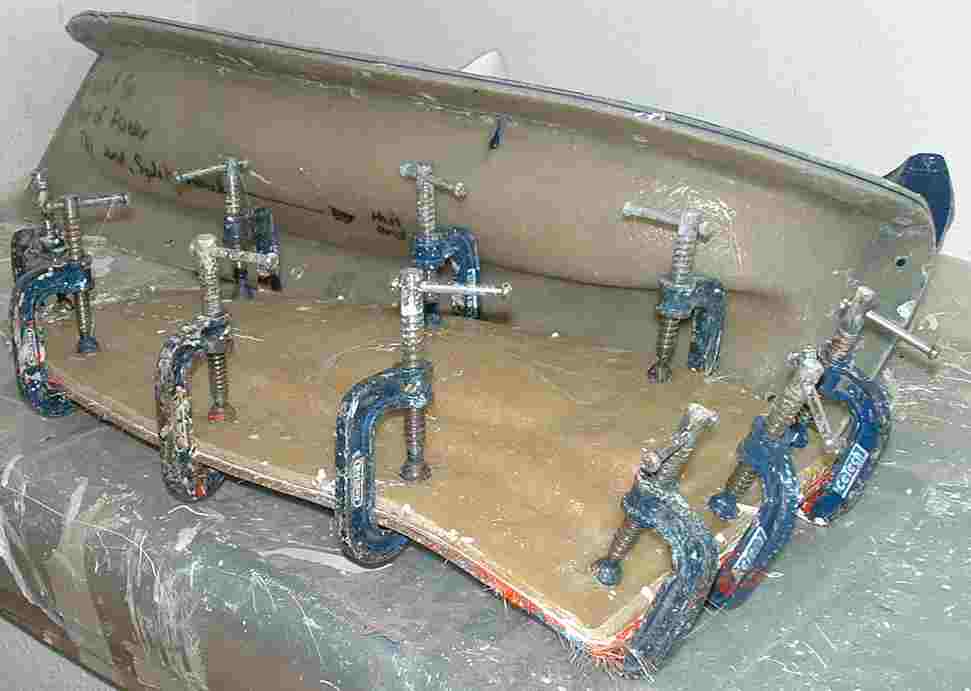|
COMPOSITE MATERIALS
|
|||||||||||
|
Composite materials (or composites for short) are engineered materials made from two or more constituent materials with significantly different mechanical properties and which remain separate and distinct within the finished structure.
Types
There are two categories of constituent materials: matrix and reinforcement. At least one portion (fraction) of each type is required. The matrix material surrounds and supports the reinforcement materials by maintaining their relative positions. The reinforcements impart special physical (mechanical and electrical) properties to enhance the matrix properties. A synergism produces material properties unavailable from naturally occurring materials. Due to the wide variety of matrix and reinforcement materials available, the design potential is incredible. This great variety has resulted in an enormous lexicon that confounds both new and experienced students. Names and descriptors arise from the respective experiences of different perspectives. While different industries use different terms to describe the same things, the same term can be applied in vastly different contexts.
There are the so-called natural composites like bone and wood. Both of these are constructed by the processes of nature and are beyond the scope of this text. The emerging field of tissue engineering has several enabling technologies, one of them is composite materials. Much success has been achieved with a composite comprising a bioactive reinforcement material such as hydroxyapatite and a biodegradable matrix such as polylactic acid.
Earliest examples
The most primitive composite materials comprised straw and mud in the form of bricks for building construction; the Biblical book of Exodus speaks of the Israelites being oppressed by Pharaoh, by being forced to make bricks without straw. The ancient brick-making process can still be seen on Egyptian tomb paintings in the Metropolitan Museum of Art (reproduced on page 22 of this pdf).
Modern composites
The most advanced examples are used on spacecraft in demanding environments. The most visible applications pave roadways in the form of either steel and portland cement concrete or asphalt concrete.
Engineered composite materials must be formed to shape. This involves strategically placing the reinforcements while manipulating the matrix properties to achieve a melding event at or near the beginning of the component life cycle. A variety of methods are used according to the end item design requirements. These fabrication methods are commonly named moulding or casting processes, as appropriate, and both have numerous variations. The principle factors impacting the methodology are the natures of the chosen matrix and reinforcement materials. Another important factor is the gross quantity of material to be produced. Large quantities can be used to justify high capital expenditures for rapid and automated manufacturing technology. Small production quantities are accommodated with lower capital expenditures but higher labour costs at a correspondingly slower rate.
Mechanics
Many commercially produced composites use a polymer matrix material often called a resin or resin solution. There are many different polymers available depending upon the starting raw ingredients. There are several broad categories, each with numerous variations. The most common categories are known as polyester, vinyl ester, epoxy, phenolic, polyimide, polyamide, and others. The reinforcement materials are often fibers but also commonly ground minerals. Fibers are often transformed into a textile material such as a felt, fabric, knit or stitched construction.
Advanced composite materials constitute a category comprising carbon fiber reinforcement and epoxy or polyimide matrix materials. These are the aerospace grade composites and typically involve laminate molding at high temperature and pressure to achieve high reinforcement volume fractions. These advanced composite materials feature high stiffness and/or strength to weight ratios.
One component is often a strong fibre such as fiberglass, quartz, kevlar, Dyneema or carbon fiber that gives the material its tensile strength, while another component (called a matrix) is often a resin such as polyester, or epoxy that binds the fibres together, transferring load from broken fibers to unbroken ones and between fibers that are not oriented along lines of tension. Also, unless the matrix chosen is especially flexible, it prevents the fibers from buckling in compression. Some composites use an aggregate instead of, or in addition to, fibers.
In terms of stress, any fibers serve to resist tension, the matrix serves to resist shear, and all materials present serve to resist compression, including any aggregate.
Composite materials can be divided into two main categories normally referred to as short fiber reinforced materials and continuous fiber reinforced materials. Continuous reinforced materials will often constitute a layered or laminated structure.
Shocks, impact, loadings or repeated cyclic stresses can cause the laminate to separate at the interface between two layers, a condition known as delamination. Individual fibers can separate from the matrix e.g. fiber pull-out.
Examples of composite materials:
LINKS:
COMPOSITE DIRECTORY
LINKS
|
|||||||||||
|
This
website is Copyright
© 1999 & 2013 Max Energy Ltd. The name Solar Navigator are
the bluebird
logo
|
|||||||||||

